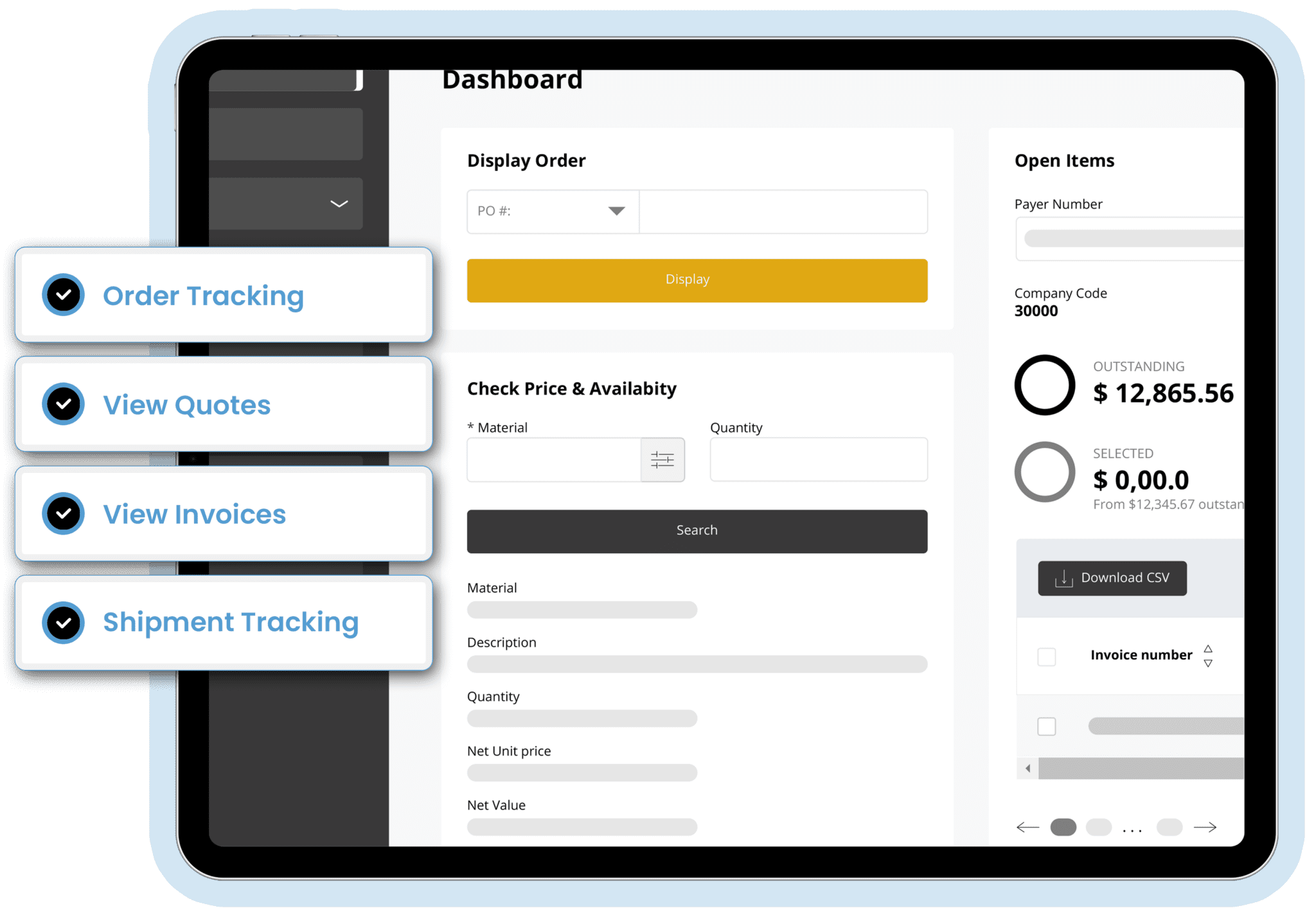COREVIST EXCLUSIVE REPORT
Economic Uncertainty Is Driving 5 Key Trends In B2B Ecommerce
Inflation and supply chain disruption are driving accelerated transformation, the dominance of Agile methodologies, and more

5 key trends are emerging in B2B ecommerce as global economies grapple with uncertainty and the possibility of recession
At Corevist, we talk to manufacturers every day who are wrestling with the challenges of uncertain economic conditions. Here are 5 leading B2B ecommerce trends that we’re seeing among manufacturers in the wake of supply chain disruption, staffing challenges, and rising interest rates. We expect these trends to grow stronger in the new year.
1. A widespread, permanent shift to digital
2. Acceleration of B2B eCommerce initiatives
3. No time for anything but Agile implementations
1. A widespread, permanent shift to digital
Early in the pandemic, McKinsey & Co. published an incredible stat on the impact which COVID had on B2B selling: 80% of B2B leaders planned to retain their new digital selling models after the pandemic.
Fast forward nearly 3 years, and this trend has become a permanent part of the B2B landscape. Organizations without B2B eCommerce (and those with outdated solutions) are prioritizing seamless, digital customer experiences—often with SAP ERP integration included for personalized contract pricing, real-time inventory, and much more.
For manufacturers, the shift to digital has gained a particular kind of urgency. Many manufacturers rely on outdated order entry methods like phone, fax, and email. All of these methods require manual processing by the manufacturer’s customer service staff. This increases costs for the manufacturer and creates a slow, ambiguous, and frustrating customer experience.

In contrast, digital self-service solutions allow B2B customers to log on from any device, 24x7x365, to browse and buy, track orders, and pay off invoices. The key is that these portals require direct, real-time integration to SAP ERP for the same kind of personalized information which customers would get through customer service reps.
(Note: Corevist solutions solve these issues with 49 prebuilt SAP integration points which are included out of the box.)
2. Acceleration of B2B eCommerce initiatives
B2B companies are moving fast to shift revenue from phone/fax/email to digital customer portals (which offer a better customer experience and lower cost-to-serve).
As the global economy struggles with an uncertain future, we expect this trend to remain strong. Once companies offer their B2B customers the convenience of a digital customer portal, it’s unlikely that buyers will want to revert to the cumbersome manual processes of phone/fax/email interaction.

3. No time for anything but Agile implementations
B2B companies need to launch fast to retain existing customers in the new digital-only world. Yet how many B2B eCommerce platforms or SIs (systems integrators) offer Agile roadmaps like these, tailored to a manufacturer’s unique needs?
- Launch an omnichannel order tracking portal in 30 days, real-time SAP integration included. Onboard customers, then expand to SKU-based order entry (integrated to SAP) in Phase II with no duplicate infrastructure investment. No catalog or rich content is required, so any forced investment in that functionality is a waste.
- Start with a self-service invoice history and payments portal with full SAP integration. Onboard customers, then expand to full SAP-integrated B2B eCommerce in Phase II, including online order tracking, with no duplicate investment in SAP integration infrastructure.
- Start with SAP-integrated B2B eCommerce in one geography. Then expand to multiple storefronts for different geographies/brands, each one fully and accurately integrated to SAP, without making duplicate investments in SAP integration architecture.
Conventional B2B eCommerce platforms aren’t built to accommodate these kinds of Agile roadmaps, and conventional eCommerce SIs are rarely equipped to provide this kind of value to manufacturers.

Core problem: SAP integration
The problem is that most platform vendors treat SAP integration as an afterthought—something which a third party can provide after the fact.
Yet we’ve seen too many failed projects which attempted to follow this plan. The integration to SAP isn’t trivial, and conventional B2B eCommerce platforms weren’t built to put SAP ERP at the core.
While middleware solutions promise “after the fact” integration, they typically require multiple internal teams (or 3rd party vendors) to keep all three systems synched. The high cost and risk associated with this kind of architecture makes it difficult for manufacturers to justify.
Corevist takes the opposite approach. All our solutions rest on a foundation of prebuilt, direct, real-time integration to SAP. Here’s what that looks like in a B2B eCommerce context.

4. No room for platforms that require heavy lifting from IT
For many B2B companies, IT can’t take on any new projects.
For companies on SAP ERP, migration to S/4HANA is looming on the horizon. And IT already had enough on their plates.
In this context, how can IT build (let alone manage) an integration between a B2B eCommerce platform, a middleware solution, and SAP ERP? (This is the only answer which conventional B2B eCommerce platforms have to the problem of SAP integration.)
The question isn’t trivial, as the demand for self-service is forcing manufacturers to launch B2B eCommerce—and personalized SAP data is essential to closing the sale with channel partners.
B2B eCommerce requires SAP integration. IT departments must provide it. Yet they have their hands full putting out other fires. It’s an impossible situation.
At Corevist, we’ve seen a growing preference over the last few years for solutions which include prebuilt, real-time SAP integration. In the midst of economic uncertainty, with IT scrambling to support essential operations, that trend has only increased, and we expect it to continue to do so.
5. ERP integration will become the prime differentiator as manufacturers choose eCommerce architectures
Here’s where the value propositions of many B2B eCommerce platforms don’t quite align to manufacturers’ diverse needs. Most platforms offer some standard features—things which have become table stakes at this point:
- Tiered user privileges
- Order upload functionality
- Easy reordering with saved carts
- Business intelligence and analytics dashboards
That said, some features which manufacturers require aren’t available out-of-the-box on conventional platforms like Magento or Salesforce:
- Real-time inventory availability from SAP
- Personalized, real-time contract pricing from SAP (including dynamic scaled pricing discounts already defined in SAP)
- Multiple ship-to/sold-to selection, mapped from SAP
- Omnichannel order tracking (i.e. visibility into orders from all channels—not just eCommerce, but EDI, phone, fax, email, etc.)
- Full invoice history from SAP (plus the ability to pay down invoices in real time, with instant posting to SAP)
For manufacturers, real-time ERP integration will continue to dominate as the primary differentiator between B2B eCommerce platforms.
Manufacturers don’t need all the value and complexity (or the associated cost) which many eCommerce platforms provide. What they need is built-in SAP integration—so every experience, every transaction, is 100% conformed to the buyer’s personalized business rules in SAP.

